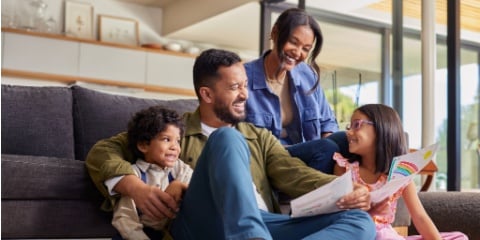11 Ways to Celebrate Diversity in Relationships & Families

Unlock Daily 30-Sec Tips for a Happier Relationship
👉 Subscribe FREEKey Takeaways
Marriage.com AI Quick Summary
In our interconnected world, the celebration of diversity in relationships and families is a vital aspect of modern life. Embracing the rich variety of human experiences, shaped by different cultures, traditions, and perspectives enhances our understanding and appreciation of one another.
This celebration is not just about acknowledging differences but actively integrating love and diversity into the fabric of our relationships. By doing so, we create stronger, more resilient bonds that reflect the true spectrum of the human condition.
In this context, diversity in relationships becomes a source of strength and joy, offering us a broader view of the world and enriching our personal and shared experiences.
What is diversity in a relationship?
Diversity in a relationship refers to the unique differences between partners, encompassing a range of aspects such as ethnicity, religion, socioeconomic status, and educational background.
This diversity enriches the partnership, offering a broader perspective on life and decision-making. It mirrors the concept of cultural diversity in the family, where various traditions and values coexist, enhancing the family’s collective experience.
Research shows that there is an increasing amount of diversity present in families, both culturally and structurally.
Embracing diversity in relationships leads to a deeper understanding and appreciation of one another, fostering a more inclusive and empathetic environment. It’s about recognizing and valuing each partner’s distinct background, just as cultural diversity in the family celebrates each member’s unique contribution to the family’s identity.
What is an example of diversity in families?
Experts have observed that referring to certain families as diverse is a way of othering certain family structures and compositions, which might become counter-productive to inclusion.
An example of diversity in families can be seen in a household where members hail from different cultural backgrounds, showcasing a blend of traditions, languages, and beliefs.
This diversity enriches the family dynamic, mirroring the broader concept of diversity in relationships, where individuals bring unique perspectives and experiences into their interactions, fostering a deeper understanding and appreciation among one another, and highlighting the importance of embracing differences within both familial and romantic connections.
5 reasons it is important to celebrate diversity in relationships and families
Celebrating diversity in relationships and families is more than a noble ideal; it’s a vital practice in today’s multicultural world. Understanding why diversity is important in relationships and embracing it within familial bonds can transform personal interactions and societal norms.
Here, we look into the significance of this celebration and its impact:
1. Fosters mutual respect
Celebrating diversity in relationships and families cultivates a profound respect for each individual’s unique background and experiences.
When diversity is acknowledged and valued, it teaches all members, especially younger generations, the importance of empathy and understanding. This mutual respect is foundational for healthy and supportive relationships, where every person feels seen and valued for who they are.
2. Enhances personal growth
Diversity in relationships and families offers a unique opportunity for personal growth. By being exposed to different perspectives and ways of life, individuals are encouraged to step out of their comfort zones and challenge their preconceived notions. This not only broadens one’s worldview but also fosters a deeper understanding of oneself and others.
Why is diversity important in relationships? Because it propels individuals towards becoming more open-minded, adaptable, and empathetic citizens of the world.
3. Strengthens bonds
The act of celebrating diversity requires open communication and active listening, which are key components of strong relationships.
When family members and partners make an effort to understand and appreciate each other’s differences, it leads to a deeper emotional connection and trust. This strengthened bond is crucial for navigating life’s challenges together and building a resilient family unit or partnership.
4. Prepares for global society
In today’s globalized world, being comfortable with and knowledgeable about diversity is an invaluable skill.
Families and relationships that embrace diversity prepare their members to interact successfully with a wide range of people in various settings, from the workplace to social environments. This adaptability and cultural competence are essential for thriving in a diverse and interconnected world.
5. Encourages innovation and creativity
Diversity in relationships and families can be a powerful catalyst for creativity and innovation. When individuals from different backgrounds come together, they bring unique perspectives and ideas.
This amalgamation of diverse thoughts and experiences can lead to innovative problem-solving and creative expression that might not have been possible in a more homogenous setting. Celebrating diversity means embracing the potential for new ideas and approaches in everyday life.
11 ways to celebrate diversity in relationships and families
Celebrating diversity in relationships and families is essential for fostering understanding, respect, and love. It’s about embracing the unique backgrounds, traditions, and perspectives that each person brings.
Studies have shown that diversity in relationships does not hamper the satisfaction experiences by the couple. So, you can be in a diverse relationship and still have a thriving bond.
Here are eleven ways to celebrate and integrate cultural diversity into the fabric of your relationships and family life, enriching everyone involved:
1. Share cultural traditions
Embracing diversity in relationships starts with sharing and valuing each other’s cultural traditions. This could mean celebrating a partner’s national holiday with the same enthusiasm as your own or incorporating a blend of customs in family celebrations. It’s a tangible way to honor and understand the roots and values that shape each other.
2. Learn languages together
Language is a core element of cultural identity. In families or relationships where multiple languages are spoken, learning each other’s languages is a profound way of bridging gaps and deepening connections. It’s not about fluency but the effort and respect that learning another language signifies.
3. Cook and enjoy diverse cuisines
Food is a universal language and a delicious entry point into cultural diversity in the family. Preparing and sharing meals from different cultural backgrounds can be an enjoyable and educational experience, fostering a deeper appreciation and understanding of each other’s heritage.
4. Educate each other
Take the time to educate each other about the historical, social, and cultural contexts that shape your individual perspectives. This education can come in many forms, such as storytelling, sharing music, or watching documentaries together. It’s about creating a shared understanding and respect for the diversity in relationships.
5. Travel together
Traveling to places that hold cultural significance for each other can be an eye-opening experience. It’s a way to see the world through your partner’s or family member’s eyes and understand their background and experiences on a deeper level.
6. Encourage open dialogue
Open dialogue is essential in navigating how much diversity is enough without feeling overwhelmed. Encourage honest and respectful conversations about differences, preferences, and any cultural misunderstandings that may arise. This fosters a safe environment where everyone feels heard and valued.
7. Celebrate all festivals
Celebrating a wide array of festivals from each other’s cultures is a joyful way to embrace cultural diversity in the family. It’s a chance to learn about the significance behind different celebrations and create new traditions that blend various cultural elements.
8. Incorporate diverse decor
Decorating your shared spaces with items that reflect the diverse cultures of the family or relationship can create a sense of belonging and respect for each other’s backgrounds. It’s a visual celebration of the diversity in relationships and a constant reminder of the unique blend of cultures that enriches your lives.
9. Support diverse media consumption
Actively choosing to watch films, read books, and listen to music from different cultures can broaden perspectives and foster a greater understanding of the world. It’s a way to celebrate and learn about diversity from the comfort of your own home.
10. Respect religious practices
Understanding and respecting each other’s religious beliefs and practices is crucial in relationships and families with diverse backgrounds. This respect can manifest in various ways, from participating in religious ceremonies to simply acknowledging and supporting each other’s faiths.
To learn more about the implications of dating someone with different religious beliefs, watch this video:
11. Engage in community events
Participating in community events that celebrate different cultures can enhance your understanding and appreciation of the diversity around you. It’s an opportunity to connect with others, learn new things, and show your support for the diverse world we live in.
FAQs
In a world rich with diversity, understanding and embracing our differences is key. Here are insights into fostering open communication, involving children in cultural celebrations, and navigating intersectionality within families.
-
How can I encourage open communication about our cultural differences in a relationship?
Create a safe, non-judgmental space where both partners feel comfortable sharing their cultural backgrounds and experiences. Regularly dedicate time to discuss your traditions, values, and beliefs. Express genuine curiosity and empathy towards each other’s heritage, and use misunderstandings as opportunities for learning and growth.
-
Is it essential to involve children in cultural celebrations, and if so, how can it be done effectively?
Yes, involving children in cultural celebrations is crucial for their identity development and cultural understanding. Make it interactive and fun; let them participate in the preparation of traditional foods, teach them songs or dances, and share stories behind the celebrations. This hands-on approach makes learning about culture enjoyable and memorable.
-
How do you navigate challenges related to intersectionality within a family?
Acknowledge and respect each family member’s unique experiences and identities. Encourage open discussions about how different aspects of identity intersect and affect each person’s life. Foster an environment of empathy and support where family members can express their feelings and challenges without fear of judgment. Educate yourselves together on intersectionality and its impacts.
Summing up
Embracing diversity in relationships and celebrating the diversity of families is a profound journey towards understanding, respect, and love. It transcends mere tolerance, weaving a rich tapestry of experiences and perspectives that enrich our lives.
By fostering an environment where differences are not just acknowledged but cherished, we pave the way for a more inclusive and harmonious world. This journey enhances our connections, deepens our empathy, and broadens our horizons.
In doing so, we not only honor the unique tapestry that each individual brings to the table but also contribute to a society where the diversity of relationships and families is seen as a wellspring of strength and unity.
 Tips
Tips
Write your tip or submit a video tip
All tips are reviewed before the publishing.
Share this article on
Want to have a happier, healthier marriage?
If you feel disconnected or frustrated about the state of your marriage but want to avoid separation and/or divorce, the marriage.com course meant for married couples is an excellent resource to help you overcome the most challenging aspects of being married.
Recent Articles
Related Quizzes
Unlock Daily 30-Sec Tips for a Happier, Healthier Relationship
👉 Subscribe FREE on YouTube We'd love your feedback!
We'd love your feedback!
 Expert Q&A
Expert Q&A
Ask your question related to this topic & get the support you deserve from experts.



















 Thanks for your feedback!
Thanks for your feedback!